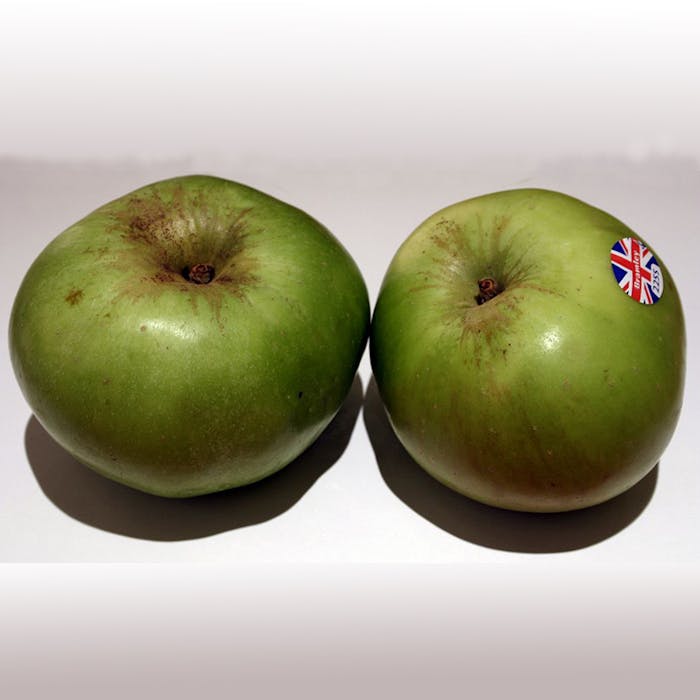
The Bramley Apple - British to its core
The Bramley is a well-known and very popular British apple cultivar, usually used as a cooking apple. A peculiarity of the variety is that when cooked it becomes golden and fluffy. Its origin goes back to 1809.
Bramley apple trees are large, vigorous, spreading and long-lived. The apples are very large, two or three times the weight of a typical dessert apple. The tree needs a pollinator and is usually grown with at least two other varieties of apple for this reason.
In 1809, a young girl, Mary Ann Brailsford, took some pips from her mother's apple cooking and planted them in her garden in Southwell, Nottinghamshire. Mary left the house when she married and possibly never saw the apples that were produced. She died in 1852 never knowing that "her" seedling was to become famous.
The tree Mary had planted in the garden was later included when a local butcher, Matthew Bramley, bought the cottage in 1846. Later, in 1856, a local nurseryman, Henry Merryweather, asked if he could take cuttings from the tree and start to sell the apples. Bramley agreed but insisted that the apples should bear his name, and thus became forever immortalised by one of the nation's favourite fruits.
As a young man Henry Merryweather worked as a gardener on the nearby Norwood Park Estate, and when John Ralph Starkey bought the hall, gardens and pasture in 1880, he turned to Henry Merryweather for advice about which apples and fruit he should be planting on his acreage. The Bramley Apple was suggested and the first commercial orchard of Bramley was established in 1910 at Maythorne Orchard, close to the Lower Kirklington Road on what is now a golf course.
In 1900, the original tree was knocked over during violent storms; it survived, and is still bearing fruit two centuries after it was planted.
A blue plaque on the house in Southwell now commemorates the apple, and in 2009 a window commemorating the 200th anniversary of the planting of the tree was installed in Southwell Minster.
Further reading
Links to external websites are not maintained by Bite Sized Britain. They are provided to give users access to additional information. Bite Sized Britain is not responsible for the content of these external websites.
